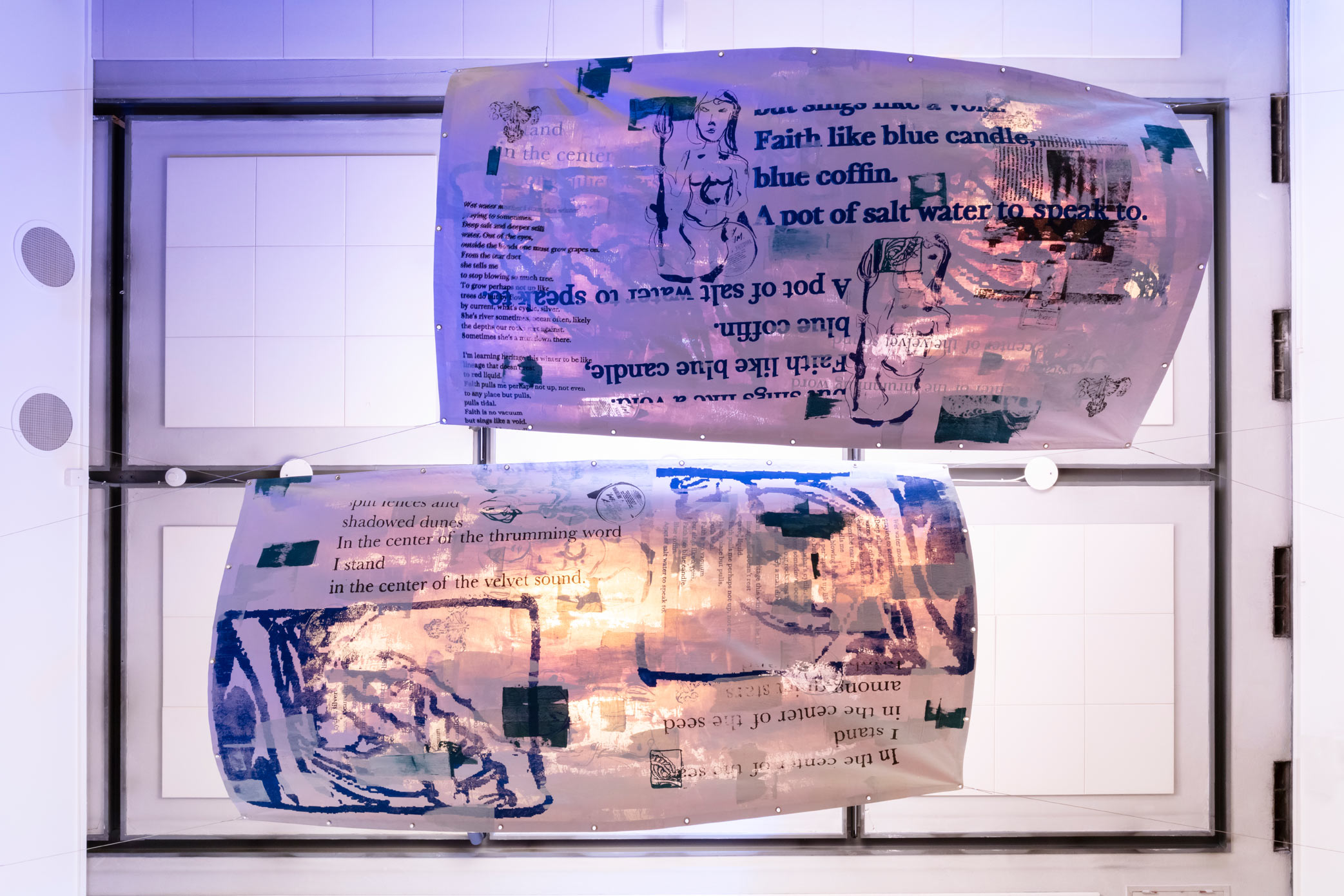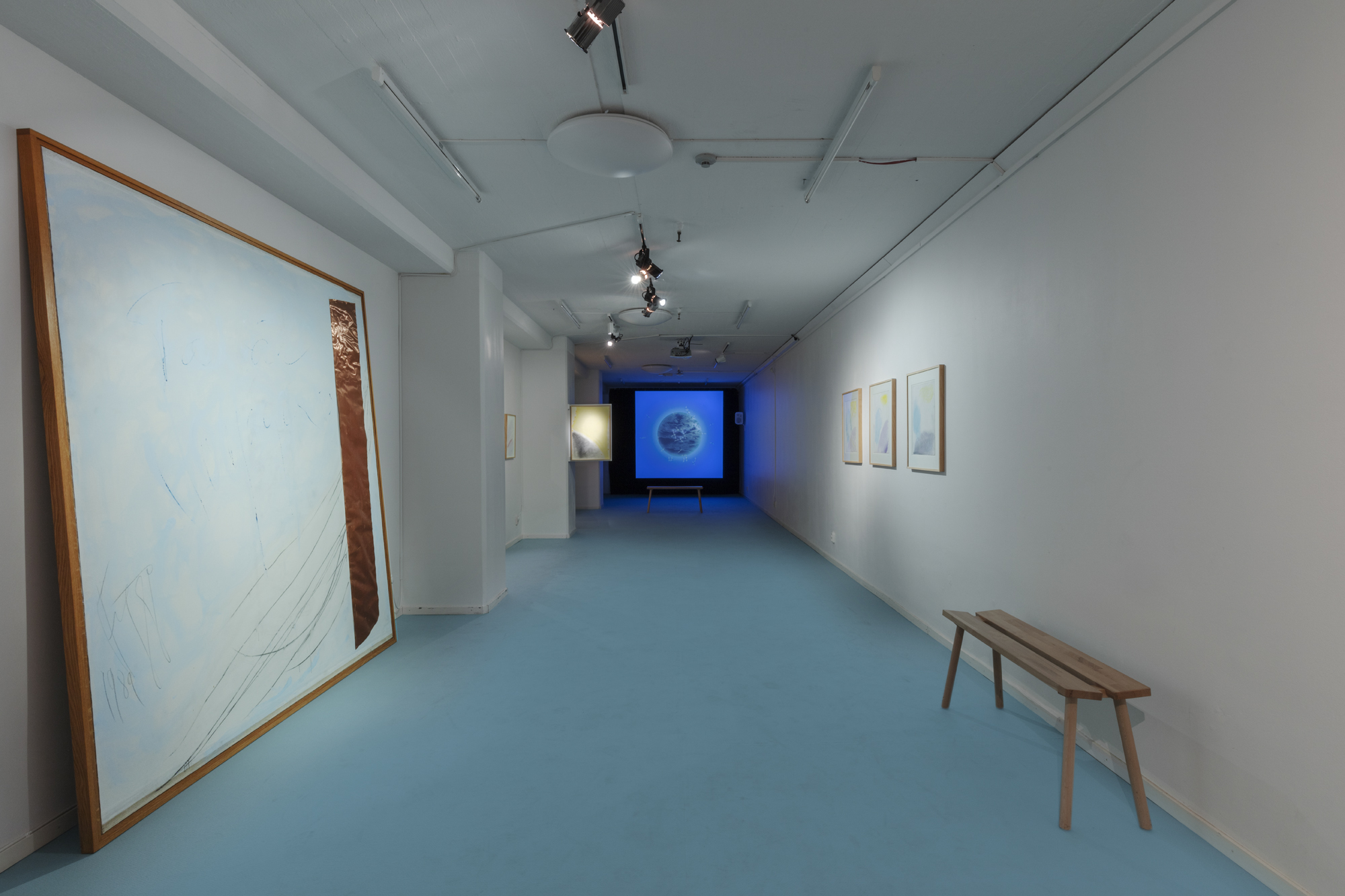Cara Tolmie
13.5 – 26.8 2023
Mint, ABF Stockholm, Sveavägen 41, Stockholm
Cascade Bend Chamber is a major new commision at Mint, led by artist and musician Cara Tolmie. It takes shape through installation, music and performance and is made in dialogue with various collaborators including, amongst others, Julia Giertz, Susanna Jablonksi and live performances with Stine Janvin and Em Silén.
The project at large stems from a vocal method that Cara Tolmie has been developing over the past five years called Internal Singing. This is a practice that explores a sensitised voice- body bind by investigating the relationship between sounding on both the inhale and exhale, vocal imaginaries, slight movement, circular vocal sound, and self-administered touch that attunes her body in states of over-sensitivity.
The exhibition hosts a series of listening spaces expanding out from Internal Singing – These environments are constructed from textiles, sonic objects, sound and sculpture, inviting the audience into an enigmatic landscape built to hold and guide them through various states of listening and bodily attention. Across each of the three rooms the elements of listening, presence and sound weave together, presenting an experience of vocality in multiplicity, persistently in movement – coaxing, calming, amusing, disorientating and at times discomforting.
Throughout the exhibition there will be a series of performances that bring to the fore the particular qualities of the live singing voice. Using the various listening rooms as stages or sets for these musical gatherings, each performance will use elements of vocal improvisation explore co-produced landscapes of affect, vocal multiplicity and the curious territory of unknowns that exist in between.
Cara Tolmie (b. 1984, Glasgow) spends much of her time oscillating between contexts as an artist, musician, performer, DJ, pedagogue and researcher. Her works have been performed and exhibited widely at art galleries, music festivals, biennials, conferences and in the public space – both as solo presentations and collaborative projects.
Her practice at large centres itself upon the voice, the body, and the complex ties between the two. All at once subjective as well as socially determined, she explores voice and body as two co-dependent entities able to confirm as well as contradict one another. Within this she often explores performative techniques that disorient the listening relationship between the singer and her audience through live uses of the defamiliarised, uncanny and sampled singing voice. Cara Tolmie is currently a PhD candidate in Critical Sonic Practice at Konstfack, Stockholm.


















































